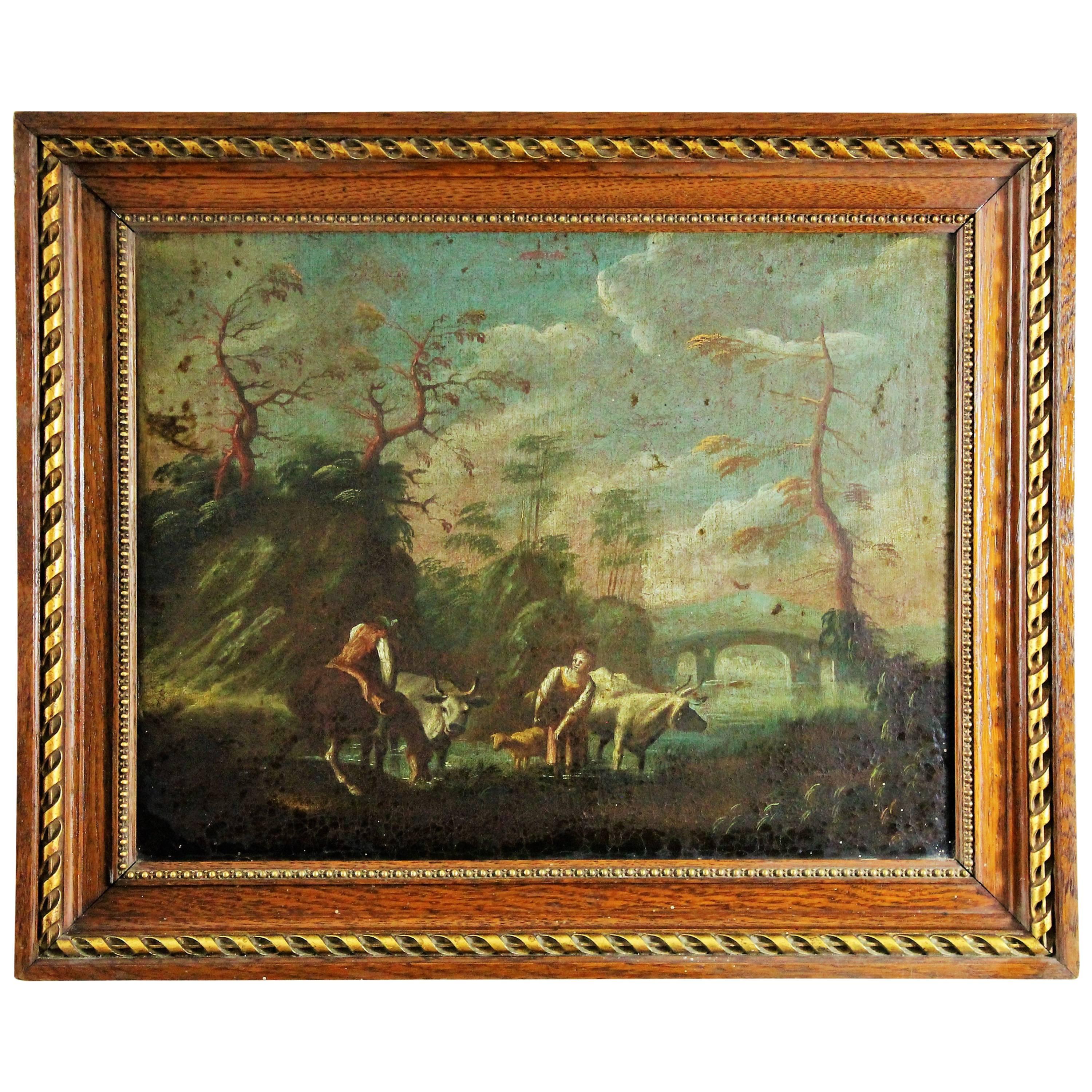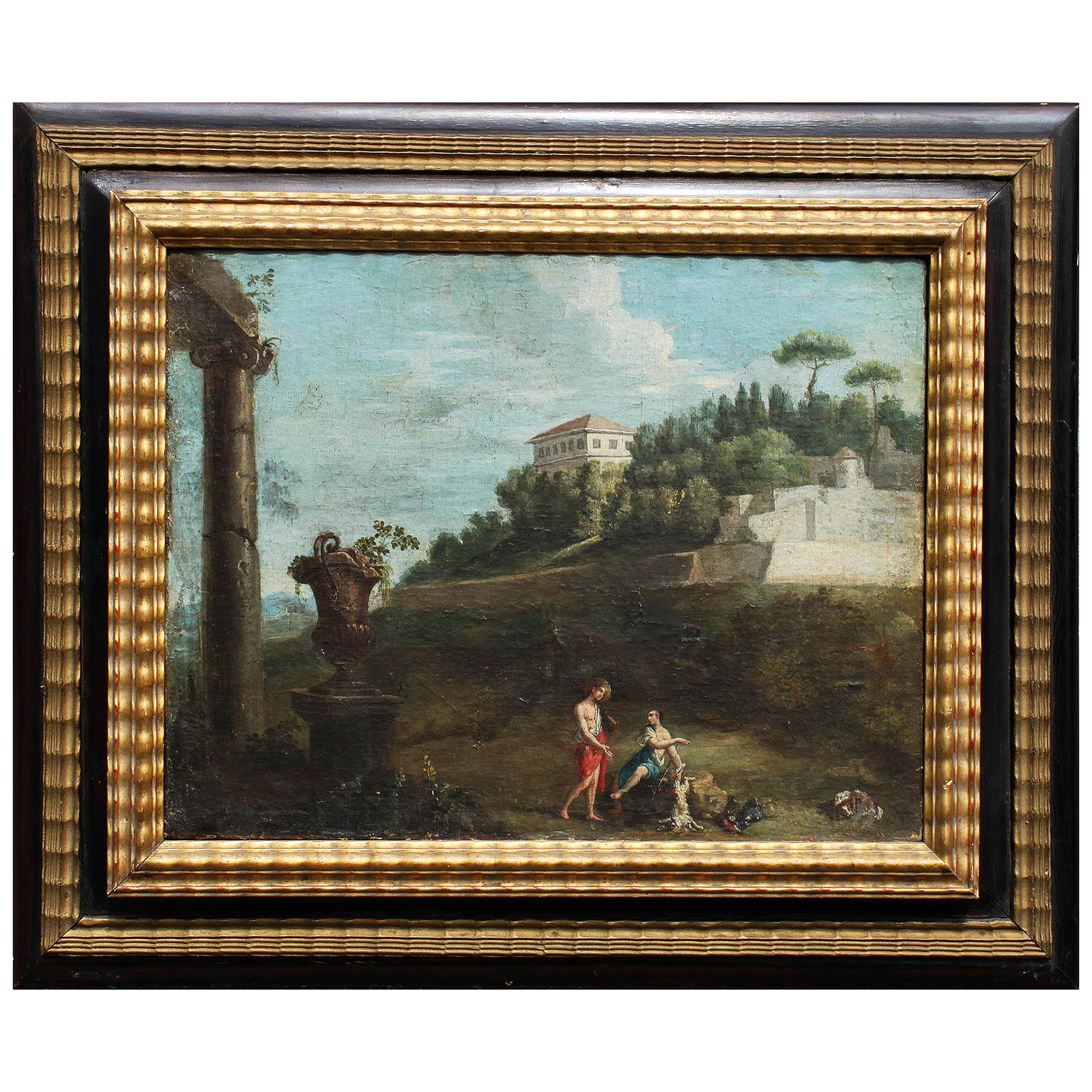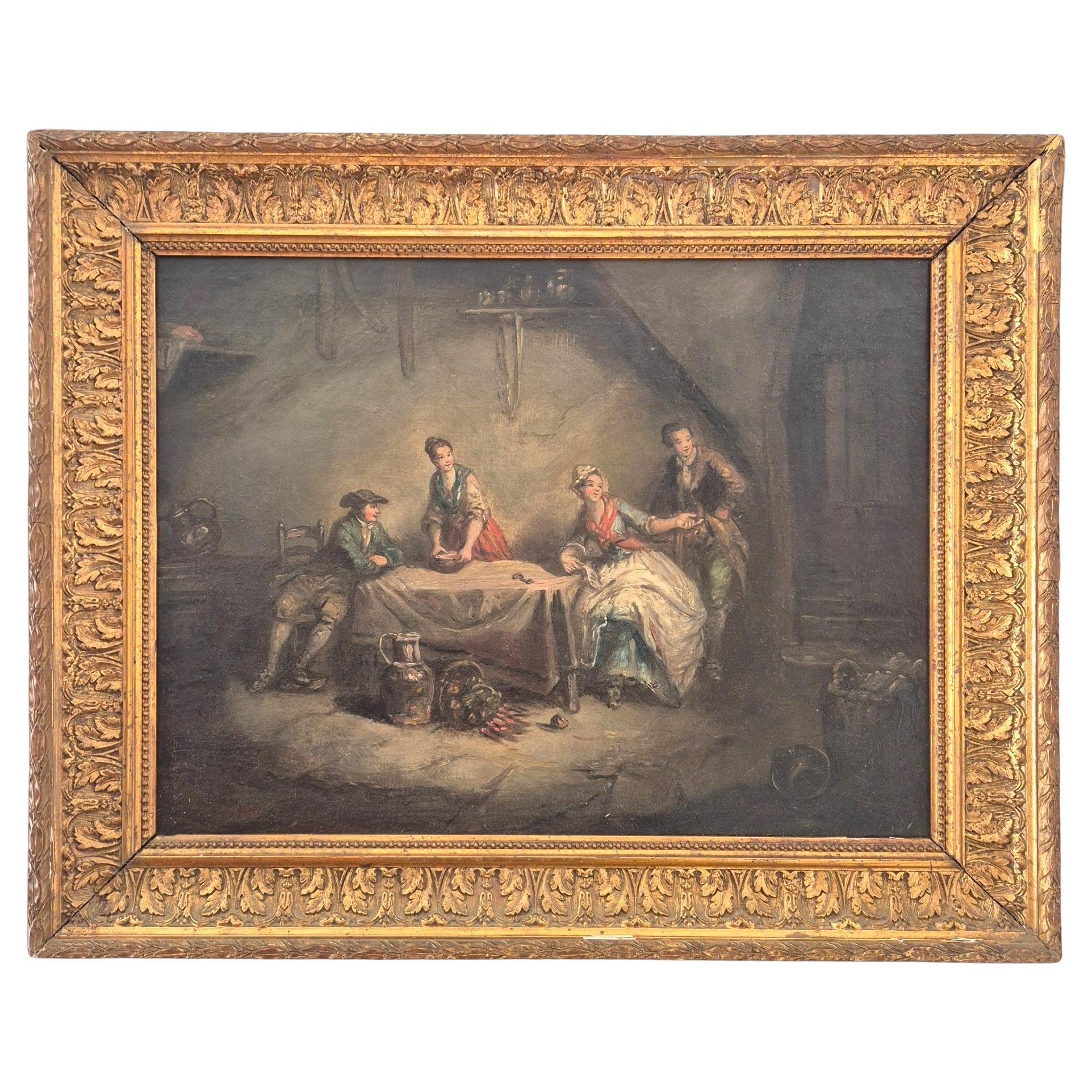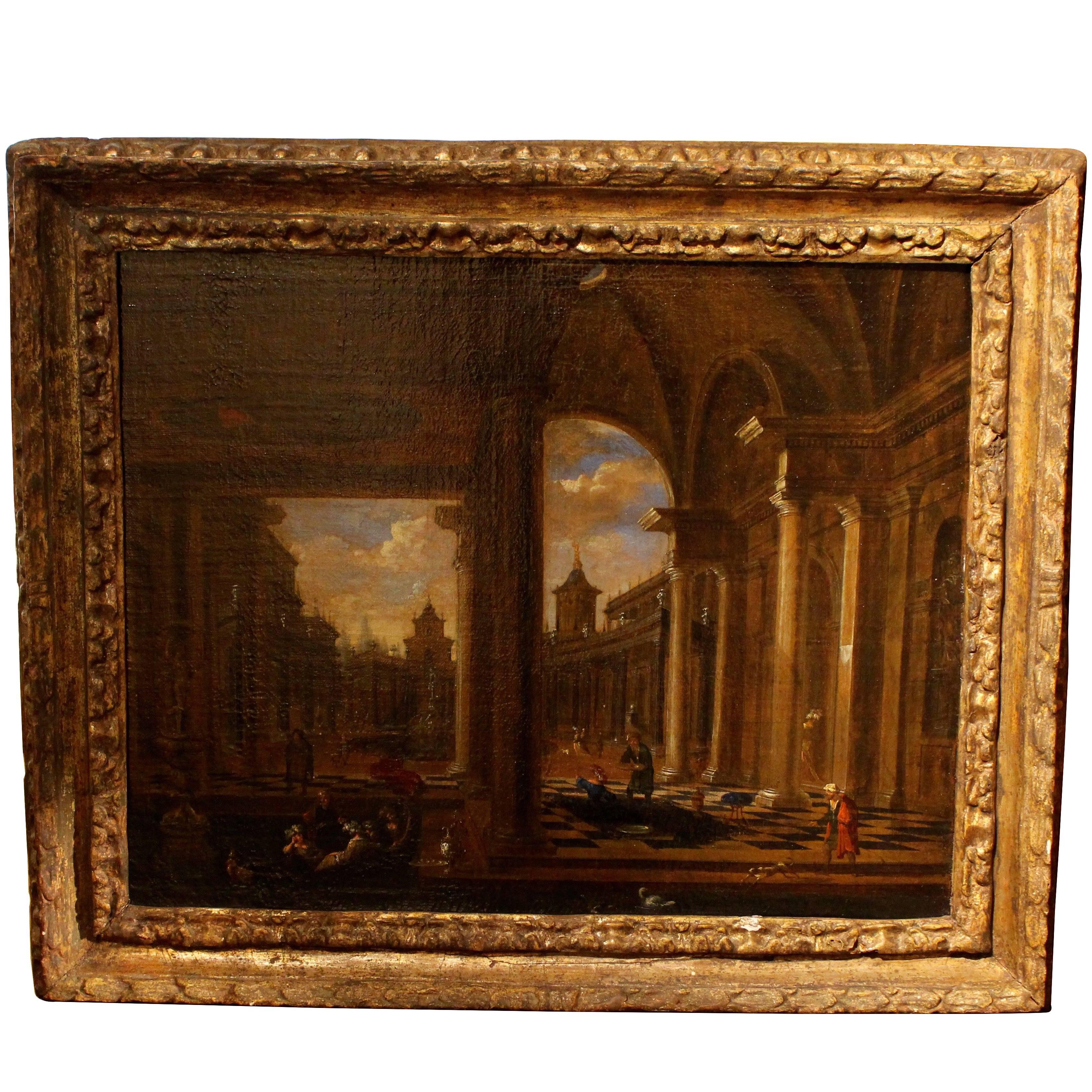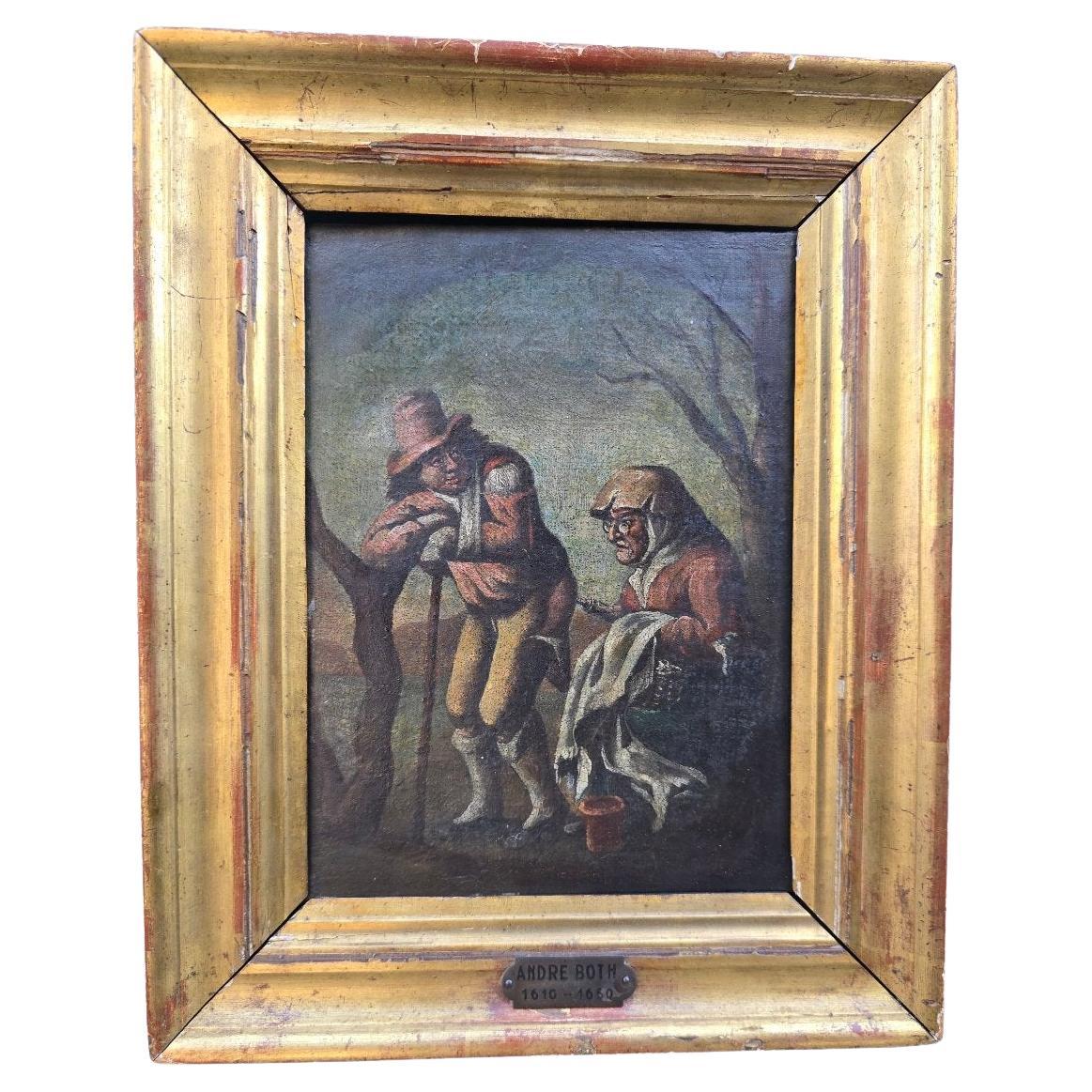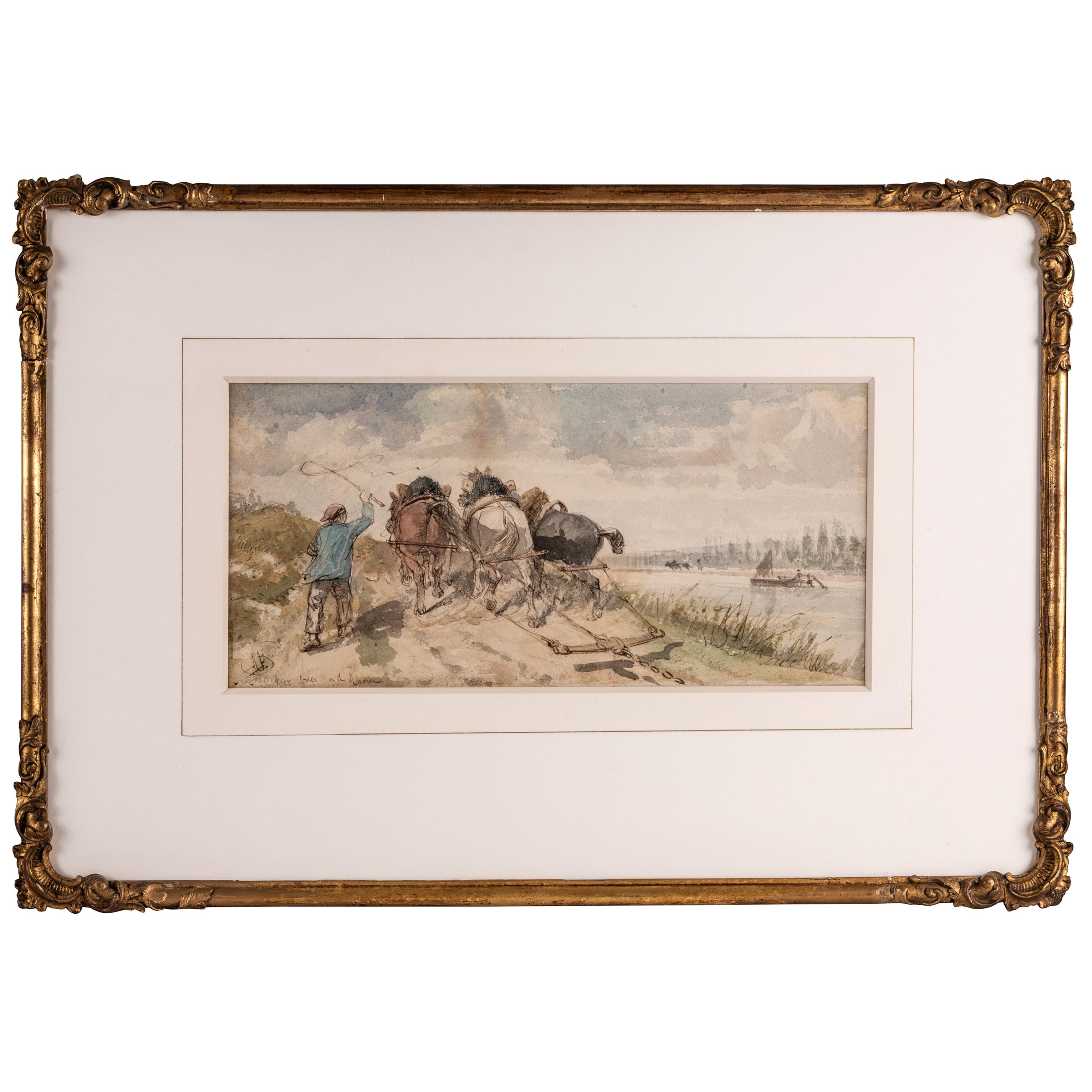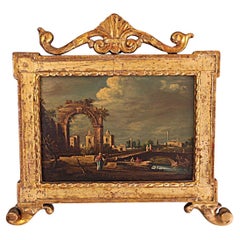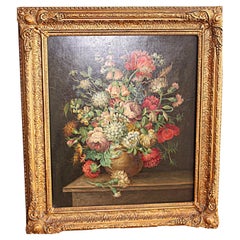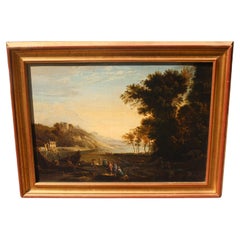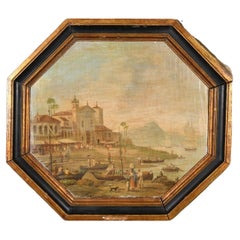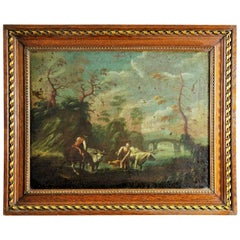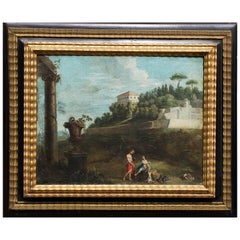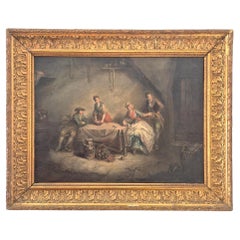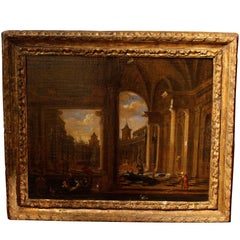Items Similar to After J.R. Lucotte – Stonemasons at Work oil on paper
Want more images or videos?
Request additional images or videos from the seller
1 of 12
After J.R. Lucotte – Stonemasons at Work oil on paper
$3,895.08
$4,868.8420% Off
£2,880
£3,60020% Off
€3,409.72
€4,262.1520% Off
CA$5,385.28
CA$6,731.6020% Off
A$6,032.42
A$7,540.5320% Off
CHF 3,168.45
CHF 3,960.5620% Off
MX$73,352.30
MX$91,690.3720% Off
NOK 40,122.86
NOK 50,153.5820% Off
SEK 38,087.39
SEK 47,609.2320% Off
DKK 25,448.05
DKK 31,810.0620% Off
About the Item
After J.R. Lucotte – Stonemasons at Work
Medium: Oil on paper
Dimensions: 178 cm x 210 cm
Date: 20th Century
Attribution: After Jacques-Raymond Lucotte (1733–1804)
This strikingly large and detailed oil painting, Stonemasons at Work, is a 20th-century copy inspired by the renowned 18th-century French architect, designer, and engraver Jacques-Raymond Lucotte. Based on his original engraved plate from Diderot and d’Alembert’s Encyclopédie, this painting faithfully captures the spirit and technical precision of Enlightenment-era illustrations, while reinterpreting them in a bold and expressive painterly medium.
Executed in oil on paper, the work depicts a bustling construction site populated by skilled stone masons engaged in various aspects of their craft. From measuring and chiselling to hoisting timbers and laying blocks, each figure is rendered with careful attention to gesture, posture, and period-accurate attire. The partially built stone arch at the centre of
- Dimensions:Height: 70.08 in (178 cm)Width: 82.68 in (210 cm)Depth: 3.15 in (8 cm)
- Style:George III (In the Style Of)
- Materials and Techniques:
- Place of Origin:
- Period:
- Date of Manufacture:1960s
- Condition:Minor losses. Could do with a light clean.
- Seller Location:Seaford, GB
- Reference Number:1stDibs: LU10376245004442
About the Seller
New to 1stDibs
Joined in the past six months.
No Reviews Yet
Vetted Professional Seller
Every seller passes strict standards for authenticity and reliability
Established in 2021
1stDibs seller since 2025
Typical response time: 3 hours
- ShippingRetrieving quote...Shipping from: Seaford, United Kingdom
- Return Policy
Authenticity Guarantee
In the unlikely event there’s an issue with an item’s authenticity, contact us within 1 year for a full refund. DetailsMoney-Back Guarantee
If your item is not as described, is damaged in transit, or does not arrive, contact us within 7 days for a full refund. Details24-Hour Cancellation
You have a 24-hour grace period in which to reconsider your purchase, with no questions asked.Vetted Professional Sellers
Our world-class sellers must adhere to strict standards for service and quality, maintaining the integrity of our listings.Price-Match Guarantee
If you find that a seller listed the same item for a lower price elsewhere, we’ll match it.Trusted Global Delivery
Our best-in-class carrier network provides specialized shipping options worldwide, including custom delivery.More From This Seller
View AllAntique Venetian capriccio oil painting
Located in Seaford, GB
Francesco Guardi Venice Oil Painting – Venetian Art in the Manner of Guardi
Exquisite 19th-Century Venetian Oil Painting
Experience the timeless elegance of Venetian art with this r...
Category
Early 20th Century Paintings
Materials
Pine, Paint
$1,677 Sale Price
20% Off
Exquisite 19th Century English Still Life of wild flowers– Oil on Wood Panel
Located in Seaford, GB
A captivating and finely executed 19th-century English still life painting, rendered in oil on wood panel, depicting an abundant bouquet of mixed flowers in a terracotta urn. This hi...
Category
Antique 19th Century English High Victorian Paintings
Materials
Paint
Manner of Claude Lorrain Merchants on the banks of the river po
By (after) Claude Lorrain (Claude Gellée)
Located in Seaford, GB
Italianate landscape, Manner of Claude Lorrain
Very good Quality oil on relined canvas in the Manner of Claude Lorrain, cargo ships on the banks of the river Po Italy.
📜 Provenance – Italianate Landscape after Claude Lorrain, England or Italy, circa late 18th–early 19th century
This finely executed oil on canvas is an accomplished historic copy after Claude Lorrain’s celebrated Italianate river landscapes, specifically related to his Landscape with Merchants (c. 1630s), held at the National Gallery of Art, Washington, D.C. The composition also bears a close resemblance to the 1769 engraving by Boydell and James Mason, after a painting once in the distinguished collection of Robert Trevor, 4th Baron Trevor, later 1st Viscount Hampden.
The scene features cargo ships along the tranquil banks of the River Po, enveloped in the soft, atmospheric light for which Claude Lorrain (1600–1682) is universally revered. Executed in the idiom of the Grand Tour period, the painting exemplifies the classical Arcadian themes sought by aristocratic collectors travelling through Italy in the 18th and early 19th centuries.
This work is a particularly elegant example of the period's taste for Claudean compositions, balancing architectural elements with expansive vistas and golden, diffused light. The canvas has been professionally relined and restored, housed in a contemporary frame that complements the work’s scale and palette. Minor craquelure and darkening to areas of the blue and green pigments remain consistent with age, enhancing its historic charm.
Ideal for integration into neoclassical, traditional, or transitional interiors, this work represents an opportunity to acquire a piece of decorative art with a strong visual lineage and academic relevance — a testament to Lorrain’s enduring influence across centuries of landscape painting.
Very similar to the Landscape with Merchants in the National Gallery of Art, Washington, D.C.
Our version could be after the engraving by Boydell and James Mason on 1st January 1769.
Interestingly, the source painting for the painting was once in the collection of Robert Trevor, 4th Baron Trevor (from 1764), and subsequently (from 1776) 1st Viscount Hampden.
18th-Century Italian Landscape in the Manner of Claude Lorrain
This exquisite 18th-century Italian Landscape in the manner of Claude Lorrain captures the essence of Italian Baroque landscape painting, showcasing the serene beauty and harmony of the classical countryside. Drawing inspiration from the Golden Age landscape painting, it reflects the elegance and detail characteristic of Claude Lorrain-style artwork, featuring sweeping vistas, balanced compositions, and an idealised landscape scene that exudes timeless charm.
A Classical Italian Countryside Painting...
Category
Antique 18th Century British Baroque Paintings
Materials
Canvas
Early 19th century Capriccio Brazil School Painting
Located in Seaford, GB
Rare Early 19th century Capriccio view of Rio de Janeiro Painting
Probably painted circa 1810 by one of Jean-Baptiste Debret, Italian Students.
Painted on Sailcloth.
Historical Context of Early 19th Century Portuguese Colonial Brazil
1.1 Transition from Colony to Empire
During the early 19th century, Brazil underwent a seismic shift in its political status. Originally a colony under the Portuguese Empire, the arrival of the Portuguese Royal Court in Rio de Janeiro in 1808 rapidly elevated the city’s cultural and political importance. By 1815, Brazil was declared a kingdom united with Portugal, setting the stage for the emergence of the Empire of Brazil in 1822. This period of transformation—often termed the transitional period from colony to empire—fueled a wave of artistic production in cities like Rio de Janeiro.
1.2 European Artistic Influence in Brazil
With the French Artistic Mission in Rio (initiated in 1816) and the presence of various Portuguese and European artists, Brazilian art of the early 1800s began to reflect diverse influences, from neoclassical painting to the early rumblings of romanticism. Painters such as Jean-Baptiste Debret, and Nicolas-Antoine Taunay, and local luminaries like Manuel de Araújo Porto-Alegre contributed to the fine arts tradition in Brazil. Their works featured scenes of local life, portraits of Brazilian society, and imaginative vistas—sometimes referred to as “capriccios,” in which real elements were combined with artistic liberties to create an idealized panorama.
1.3 Rio de Janeiro as Cultural and Political Hub
Rio de Janeiro, often called the Imperial capital after Brazil’s independence, was home to foundational institutions like the Imperial Academy of Fine Arts (Academia Imperial de Belas Artes). Later evolving into the Escola de Belas Artes (School of Fine Arts in Rio), these academies nurtured the talents of emerging painters, who found patronage under the Royal Court and, subsequently, the Imperial Court. The city’s significance was further enhanced by the construction of significant buildings, the modernization of infrastructure, and the mingling of European courtly customs with the traditions of local inhabitants.
. Description of the Octagonal Oil on Canvas: A Capriccio View of Rio de Janeiro
2.1 Composition and Layout
The most striking characteristic of this 19th-century Brazilian art piece is its octagonal shape, a relatively unusual format that draws the viewer’s gaze toward its centre. The composition showcases Rio de Janeiro’s shoreline in the early 1800s, brimming with merchant ships and smaller boats anchored near the shore. On the sand, there is a bustling crowd of local people—men and women carrying food and goods on their heads, loading and unloading boats, and engaging in everyday commerce. The backdrop of soaring mountains suggests Rio’s iconic topography, embodying the landscape that famously defines the city.
2.2 Architectural and Religious Landmarks
On the left side, one can discern the silhouette of a church believed to be Santa Lucia, a significant religious structure in the heart of early 19th-century Rio. This element provides viewers with a tangible reference point, linking the scene to an actual location. However, because this painting is labelled as a “capriccio,” the artist might have taken creative liberties by rearranging or amplifying certain features of the city. The melding of real and idealized elements is characteristic of these imaginative vistas.
2.3 Evoking Daily Life in Colonial Rio
One of the painting’s greatest appeals lies in its portrayal of daily life during the colonial era. Men and women from various backgrounds populate the scene. Some appear to be carrying goods on their heads, a common practice in Brazil that has persisted through different centuries. Others appear to be haggling or trading near small vessels, revealing the commercial pulse of an active port city. This focus on local people, combined with the grandeur of merchant ships, captures the tension and synergy between the every day and the extraordinary—a hallmark of Brazilian colonial painting that balances the grand narratives of empire with the rhythms of ordinary life.
2.4 An Amalgamation of Neoclassical and Romantic Influences
Although academic art in early 19th century Brazil was highly influenced by neoclassicism, the onset of romanticism can be spotted in the emotional portrayal of the sky, the lively palette, and the dramatic emphasis on nature’s beauty (the mountains, in particular). This duality reflects the fine arts tradition in Brazil during the transitional phase when artists were embracing multiple styles. As part of the School of Rio or the Rio de Janeiro school, painters often integrated academic techniques learned from European masters with emerging local subjects and influences.
3. Institutions and Artistic Movements
3.1 Imperial Academy of Fine Arts
Originally known as the Royal School of Sciences, Arts, and Crafts, the Imperial Academy of Fine Arts in Rio de Janeiro was instrumental in shaping 19th-century Brazilian art. Influential artists and teachers from Portugal, France, and other European nations congregated at the Academy, imparting their expertise to native students. As the monarchy consolidated power, the Academy enjoyed royal patronage, leading to the creation of Imperial Academy-style works that combined European academic rigour with Brazilian-themed subject matter.
3.2 Impact of the French Artistic Mission
The French Artistic Mission, which arrived in 1816, played a pivotal role in introducing advanced European artistic techniques, thereby elevating the overall quality of painting in Brazil. Artists like Jean-Baptiste Debret not only documented Brazilian society but also spearheaded the development of a local visual identity that aligned with both academicism and the national context of a blossoming empire. Debret, alongside others such as Nicolas-Antoine Taunay, mentored Brazilian artists, sowing the seeds of what would become the Brazilian academic art movement.
3.3 Religious, Historical, and Landscape Paintings
In addition to everyday scenes and historical compositions, religious iconography remained crucial throughout Portuguese colonial and imperial Brazil. Churches were omnipresent in cityscapes like Rio de Janeiro. Many colonial-era Brazilian portraits...
Category
Antique Early 19th Century Brazilian Spanish Colonial Paintings
Materials
Canvas
$2,921 Sale Price
20% Off
19th century Danish BlackSmiths Forge by Edvard Petersen
Located in Seaford, GB
Atmospheric Blacksmith Forge Interior by Edvard Petersen signed by monogram
This magnificent late 19th-century painting of an atmospheric blacksmith forge interior is by the renowned realist Danish painter Edvard Petersen. Depicting a richly detailed industrial workshop scene, it is a remarkable example of Danish realism. As an authentic Edvard Petersen painting, it showcases the artist’s dedication to portraying the lives of craftsmen and workers in the late 1800s.
If you are an art collector or enthusiast seeking to purchase an original blacksmith interior artwork, this vintage realism painting not only holds artistic value but also represents an essential piece of Danish heritage art. Below, we explore the painting’s intricate details, its historical context, and Edvard Petersen's life.
1. Artwork Overview: A Glimpse into the Industrial Past
This vintage painting of a blacksmith’s forge reflects the hardworking spirit of the late 19th century. The atmospheric industrial art is meticulously rendered with a keen eye for lighting, texture, and realism. Key aspects of this Danish blacksmith workshop artwork include:
Industrial Setting: The painting captures the interior of a blacksmith workshop, filled with well-used tools and the dim glow of the forge.
Lighting Mastery: The late 19th-century atmospheric blacksmith interior is defined by its masterful use of light and shadow. The forge fire creates a vivid, warm glow, contrasting with the cooler daylight filtering through a window.
Human Element: The blacksmith figures appear in dynamic postures, emphasising the laborious nature of their craft. The workers’ silhouettes against the glow of the fire add depth and dimension.
Textural Details: The texture of worn wood, metal tools, and stone flooring is painstakingly realistic, typical of Edvard Petersen’s style.
2. Artistic Style and Techniques
A. Realism and Atmosphere
As a prominent Danish realist painting, this work exemplifies the realist tradition for which Petersen is known. His choice of subdued, earthy tones highlights the authentic industrial atmosphere. The blend of warm, fiery hues with darker, shadowy tones creates a dramatic and contemplative mood.
B. Composition and Structure
The composition follows a well-organised structure, with:
Foreground Elements: Anvil, tools, and a large wooden barrel.
Middle Ground: Figures working at the forge and a workbench.
Background: The illuminated workshop window and hanging tools.
Colour Palette: Predominantly browns, greys, and ochres with contrasting fiery highlights.
Lighting Effect: The combination of natural and artificial lighting enhances the sense of depth and space.
3. Significance of the Painting
A. Cultural Context
This late 19th-century blacksmith painting...
Category
Antique 1890s Danish High Victorian Paintings
Materials
Canvas, Paint
$1,190 Sale Price
20% Off
19th-century Scotland Edinburgh Horse Fair Painting
By Rosa Bonheur
Located in Seaford, GB
A rare 19th-century painting of the Horsefair at the Grassmarket, Edinburgh, Scotland
Follower of Rosa Bonheur, oil on canvas
indistinctive collector wax seals verso.
19th-Century...
Category
Antique 1860s British High Victorian Paintings
Materials
Canvas
$8,114 Sale Price
20% Off
You May Also Like
Oil on Canvas Paint Flemish School, 17th Century Belgium
Located in Beuzevillette, FR
Oil on canvas depicting a country scene: a man watering his horse near a river where two cows and a sheep wade accompanied by a farmer.
Work of northern France or Belgium of the 17t...
Category
Antique 17th Century Belgian Paintings
Materials
Canvas
After Pieter van Bloemen Oil on Canvas Hunting & Ruins Scene
Located in Los Angeles, CA
School of Pieter van Bloemen (Flemish, 1657-1720) oil on Canvas "Hunting & Ruins Scene". The capriccio scene depicting two male hunters in robes, on...
Category
Antique 19th Century Belgian Renaissance Revival Paintings
Materials
Canvas, Wood, Giltwood
$5,850 Sale Price
38% Off
Daily scene of servants, oil on canvas, 19th century
Located in NICE, FR
This highly theatrical painting depicts a group of servants in the kitchen, two women and two men gathered around a table.
The group is highlighted by a halo of light; behind them o...
Category
Antique 1830s French Regency Revival Paintings
Materials
Canvas
Early 18th Century Flemish Oil Painting Depicting a Venetian Architecture Scene
Located in Palm Desert, CA
A Flemish late 17th, early 18th century oil on canvas architectural painting attributed to Jacobus Ferdinandus Saey (1658–1725) set inside a carved giltwood frame from the 1700s. Pa...
Category
Antique Early 18th Century Belgian Paintings
Materials
Canvas, Giltwood, Paint
Oil on canvas attributed to Andries Both – 17th century
Located in Madrid, ES
Burlesque genre scene attributed to the Dutch painter Andries Both (active circa 1610–1650), one of the representatives of the Caravaggio school of Utrecht.
The work depicts two pop...
Category
Antique 17th Century Dutch Other Paintings
Materials
Canvas
Watercolor by Richard Beavis, 19th Century British School
Located in Kittery Point, ME
Richard Beavis (British, 1824-1896)
Near Arles on the Rhone
Initialed and titled lower left.
Ink and watercolor on paper/board.
With an old attribution to Bonnington.
Sight size: 6 x 13 in. The dimension given otherwise includes the frame.
Framed in a charming late 19th century frame.
Best known for his rural landscapes, the British painter Richard Beavis populated his scenes with picturesque grazing cattle and people hard at work as well illustrated in our watercolor.
Provenance: The estate of Sir Edwin A.G. Manton (1909-2005) a driving force in the creation of the American International Group (AIG), a collector of paintings by John Constable...
Category
Antique Late 19th Century English Victorian Drawings
Materials
Paper
$1,120 Sale Price
20% Off
More Ways To Browse
18th Century George Iii Painting
French Lay Figure
Vintage And Antique Wall Decor And Decorations
Berlin Plaque
Black Forest Carved Table
Bronze Lion Clock
Burl Wood Cabinet Pair
Canada 18th Century
Carved Bottle Stopper
Carved Wooden Bracket
Chapel Door
Chinese Chest Red
Chinese Ming Chairs
Chinese Opium
Chinese Soldier
Chinese Tassel
Curtis Jere Metal Art
Decorative Balls Glass
